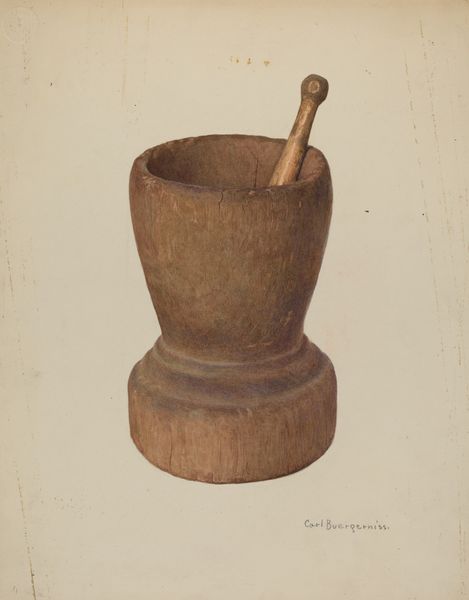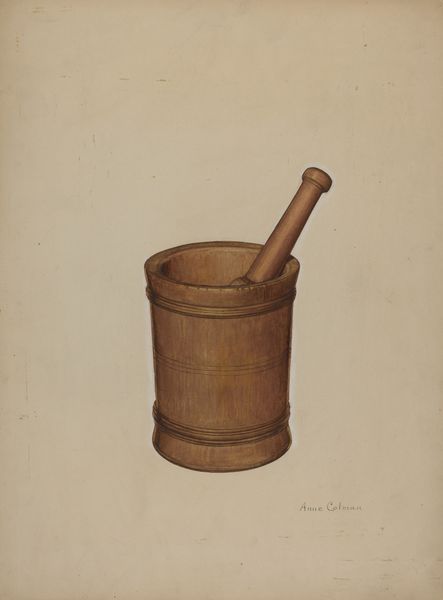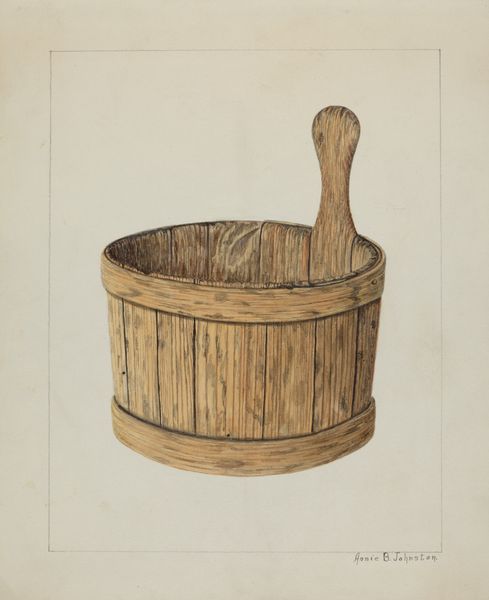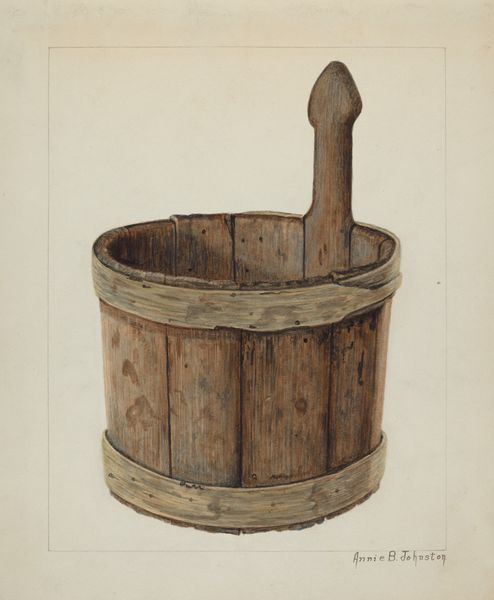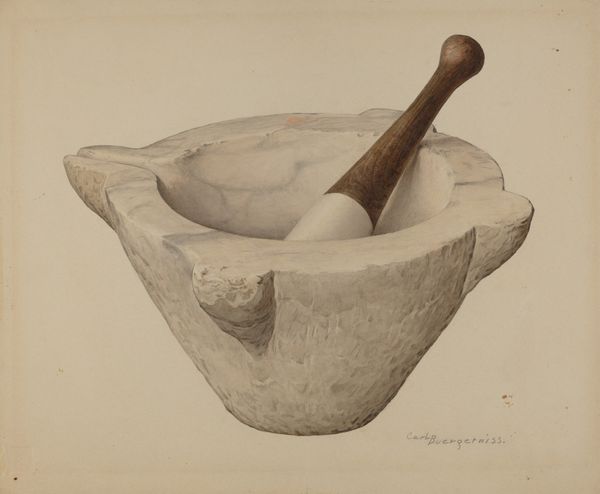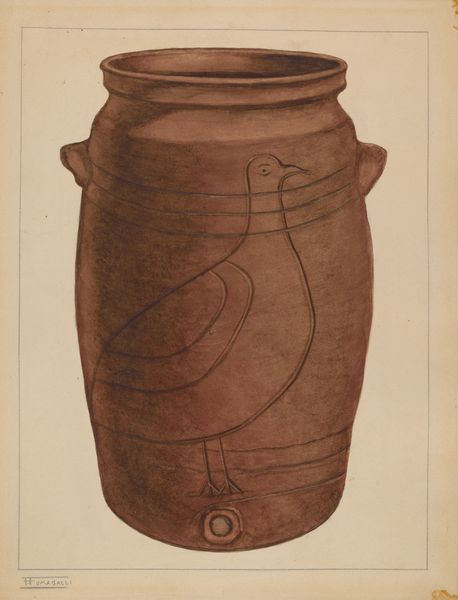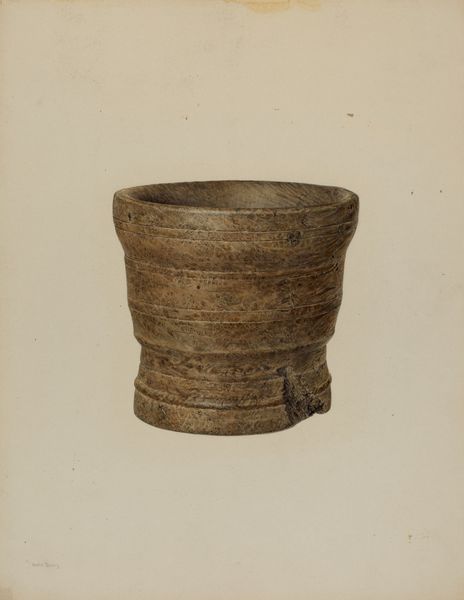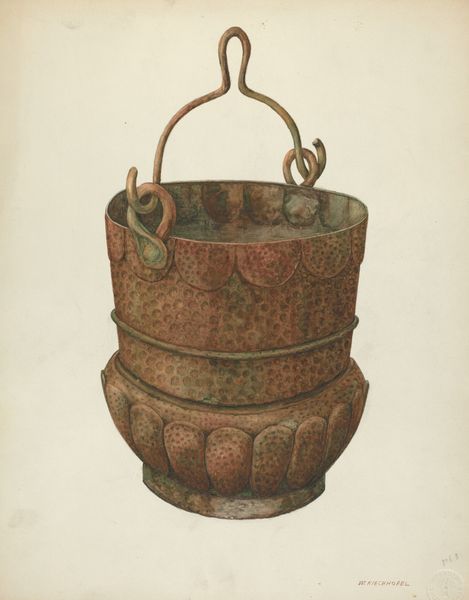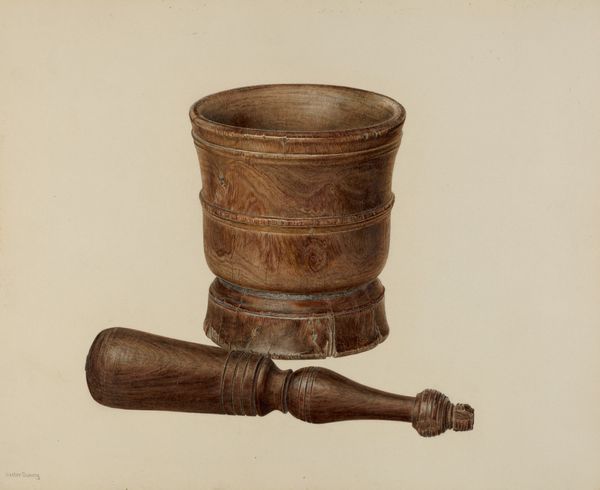
drawing, watercolor
#
drawing
#
charcoal drawing
#
watercolor
#
watercolour illustration
#
realism
Dimensions: overall: 36.5 x 28.6 cm (14 3/8 x 11 1/4 in.) Original IAD Object: 9 1/2" high; 8 1/4" in diameter
Copyright: National Gallery of Art: CC0 1.0
Curator: We're looking at Carl Buergerniss’s "Mortar and Pestle," a watercolour and charcoal drawing from 1939. What's your first impression? Editor: It feels strangely monumental, doesn’t it? Isolated against that pale background, this humble kitchen tool takes on an almost totemic quality, like an artifact discovered at an archeological dig. Curator: Absolutely. Let's think about its materiality. Buergerniss meticulously renders the texture of the wood. You can almost feel the grain, the slight roughness, perhaps traces of wear from years of use. Editor: Which elevates this seemingly mundane object. It's a deliberate act of giving value to everyday labour, wouldn’t you say? I see this as a very gendered space. Whose labour is it depicting? Curator: Good point. This resonates strongly with depictions of domestic spaces during that time. You can practically envision the kitchen it inhabited and it raises important questions about labor divisions and the societal value of traditionally feminized crafts within the household sphere. It gives value to them. Editor: I am reminded that mortars and pestles were also critical tools in early apothecaries, mainly women working with plant-based remedies. In that regard the painting suggests power dynamics between medical practices considered to be male "science", and the use of nature. Curator: That historical angle is insightful. I’m struck by how Buergerniss uses watercolor to mimic the way light falls on a three-dimensional object, and charcoal to give added depth. It's a skillful interplay of techniques that transform something so ordinary into a quietly compelling object of study. Editor: Ultimately, though, I see this as more than just a study of form and light. It encourages a discourse around what it means to dignify labor and everyday practices, both today and back in 1939. What labour are we valuing now and what are we undervaluing? Curator: Definitely. It's a quiet commentary, allowing the viewer to reflect on these essential elements of daily life—both past and present. Editor: Exactly. Looking closer definitely reveals that this drawing offers so much. Thank you!
Comments
No comments
Be the first to comment and join the conversation on the ultimate creative platform.
